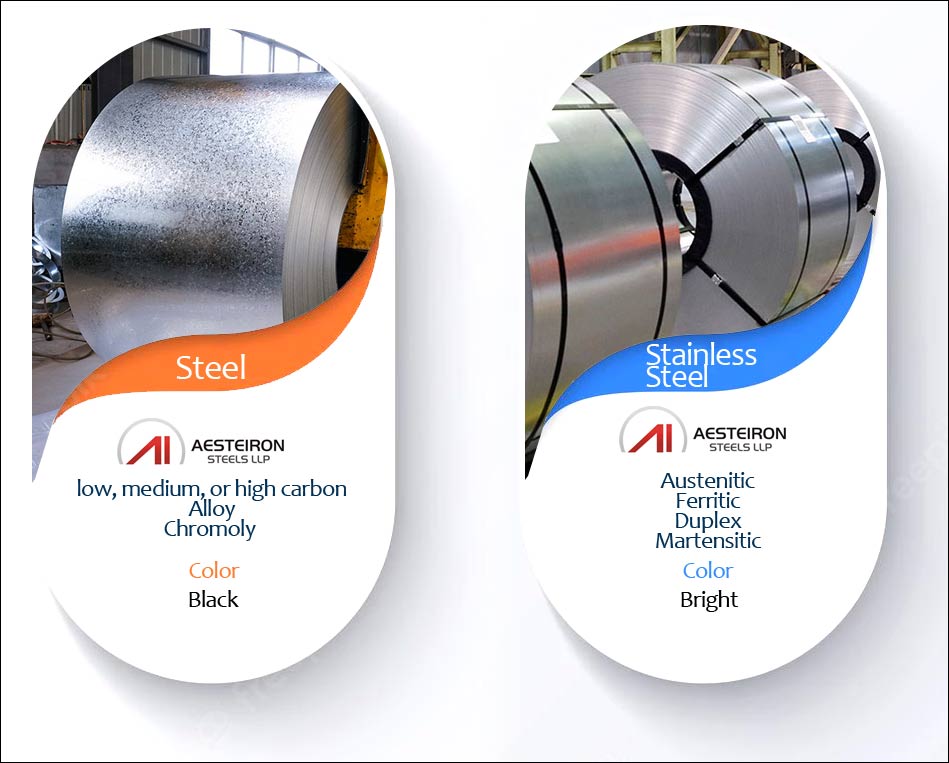Are you curious about the distinctions between stainless steel and regular steel? Understanding these differences can help you choose the right material for your needs.
Here’s a comprehensive guide that outlines how you can tell them apart:

Introduction
Both stainless steel and steel are metal alloys composed of iron mixed with other elements to achieve specific properties. While both materials have their own advantages, they serve different purposes depending on the application.
These metals are widely used across industries, from large structural components to intricate parts, each providing unique benefits based on their composition and characteristics.
Detailed Comparison
When comparing these two materials, several factors come into play, including cost, durability, aesthetics, and maintenance requirements.
- One major difference lies in affordability; steel is often more budget-friendly, making it suitable for numerous projects. In contrast, stainless steel, though pricier, offers superior resistance to corrosion and a sleek appearance.
- It's crucial to note that stainless steel and steel cannot simply replace one another since their properties differ significantly. Therefore, choosing the appropriate alloy depends on understanding the intended use case, along with evaluating their distinct traits related to physical properties, visual appeal, and chemical makeup.
- Physical Properties
Steel exhibits magnetic qualities and can be categorized into low-, medium-, or high-carbon varieties based on its carbon content. It boasts excellent thermal conductivity, ensuring efficient heat dispersal throughout the material.
On the other hand, stainless steel tends to lack magnetism under normal circumstances, except in specific cases. It possesses greater hardening capabilities compared to steel, resulting in reduced ductility and lower thermal conductivity. Consequently, heat distribution isn't as effective in SS as it is in steel.
- Visual Appearance
Stainless steel presents itself as a premium-quality metal featuring a natural luster that reflects light beautifully, giving off a polished, reflective finish.
In comparison, steel has a more subdued, matte-like texture without the same level of brightness or sheen.
- Chemical Composition
Steel production involves combining iron with carbon to enhance hardness. During this process, impurities such as manganese, phosphorus, sulfur, and silicon are eliminated from the iron to improve purity levels. Typically, steels contain less carbon than stainless steels, contributing to increased stiffness and strength.
The creation of stainless steel follows similar steps but includes additional elements like chromium, nickel, nitrogen, and molybdenum. Among these, chromium plays a pivotal role in defining SS, requiring at least 10.5% concentration to meet the definition of stainless steel. Chromium interacts with atmospheric oxygen to form a protective oxide layer, safeguarding the metal from rust formation and enabling self-repair upon minor scratches.
- Maintenance & Self-Repair Features
Thanks to its protective layer, stainless steel demands minimal upkeep. However, it isn't entirely impervious to stains or rust formation under certain circumstances. Nevertheless, it can endure prolonged usage before showing signs of wear. Furthermore, it exhibits remarkable self-healing attributes; when exposed to moisture and air, chromium within SS generates an oxide layer that prevents rusting even in damp settings. Higher chromium concentrations provide enhanced protection against corrosive agents. Regular care and maintenance alongside applying powder coatings are recommended practices. Simple cleaning methods involve using mild soap solutions or soft brushes to eliminate accumulated dirt.
- Resistance Against Corrosion
Stainless steel stands out for its exceptional ability to resist corrosion, although it may still corrode under particular conditions. Its effectiveness hinges largely on the proportion of chromium present. Without adequate chromium levels close to the outer surface, forming a fresh chromium oxide layer becomes impossible once the initial coating wears off, leaving the material susceptible to various forms of corrosion.
Regular steel also demonstrates corrosion resistance through passivation, thanks to an invisible, thin oxide layer developing naturally on its surface via interaction with ambient oxygen molecules.
Conclusion
Overall, stainless steel excels in terms of strength and corrosion resistance compared to plain steel, whose unprotected nature leads to faster deterioration over time. Stainless steel achieves its robustness by incorporating at least 10.5% chromium into its composition, forming a self-preserving barrier against environmental damage. Thus, investing in stainless steel could prove beneficial if longevity and aesthetics matter most in your project. Yet, remember that proper handling and periodic servicing remain essential regardless of the chosen material.
High Quality Cheap Price Duplex Slitter,Sheet Metal Slitter Machine,Empty Aerosol Tin Can,3 Piece Tin Can
Zhoushan Longwen Machinery Technology Co., Ltd. , https://www.longwenmachinery.com